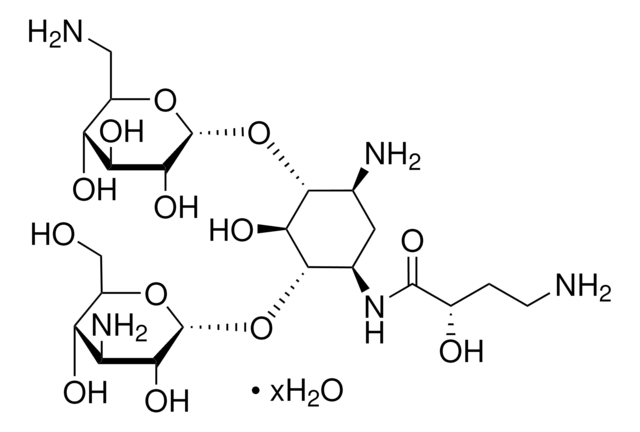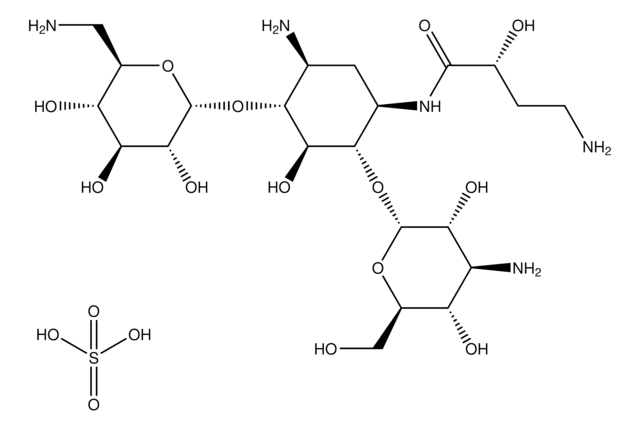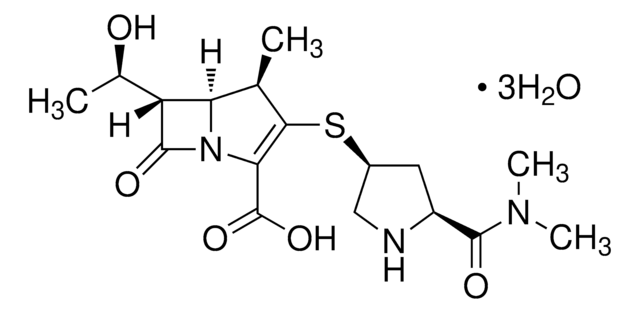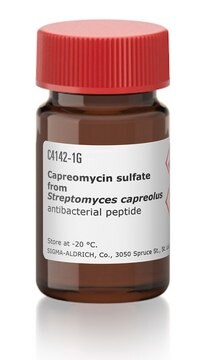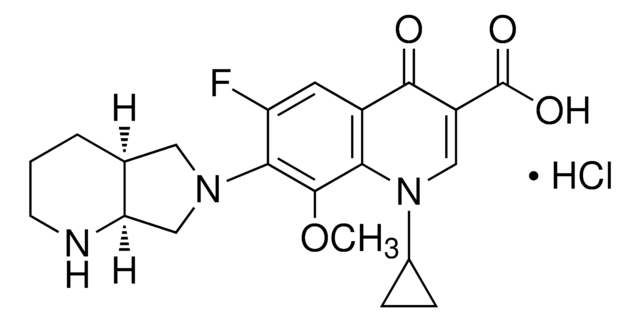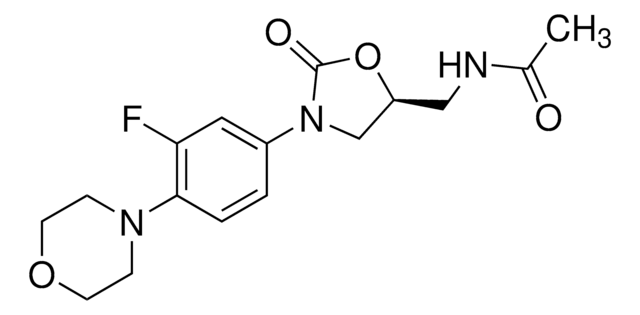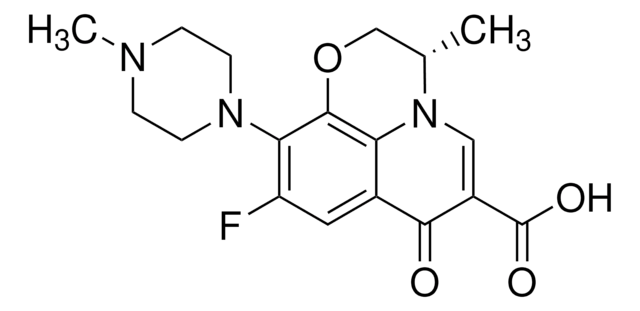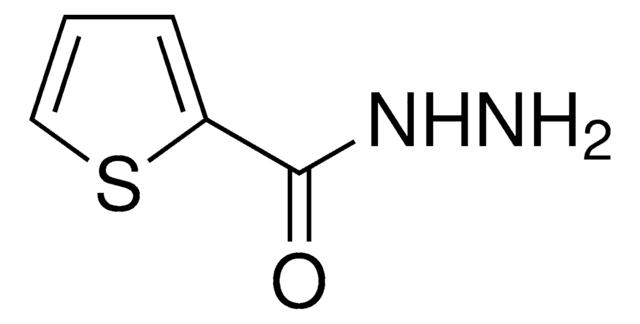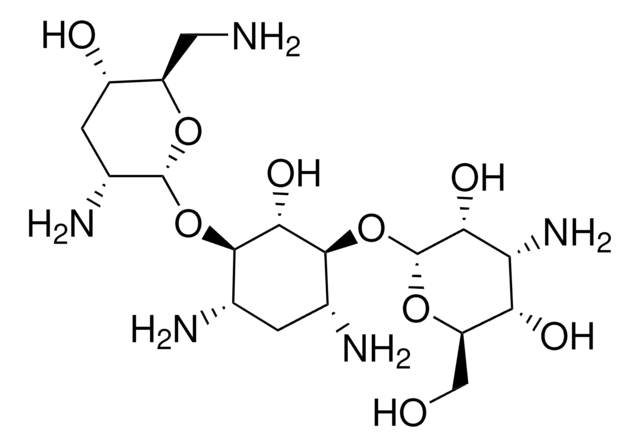A1774
Amikacin -disulfat (Salz)
potency: 674-786 μg per mg (as amikacin base)
Synonym(e):
(2S)-4-amino-N-[(1R,2S,3S,4R,5S)-5-amino-2-(3-amino-3-deoxy-alpha-D-glucopyranosyloxy)-4-(6-amino-6-deoxy-alpha-D-glucopyranosyloxy)-3-hydroxycyclohexyl]-2-hydroxybutanamide disulfate, Antibiotic BB-K8 sulfate
About This Item
Empfohlene Produkte
Biologische Quelle
synthetic
Qualitätsniveau
Form
powder or crystals
Wirksamkeit
674-786 μg per mg (as amikacin base)
Farbe
white to off-white
Wirkungsspektrum von Antibiotika
Gram-negative bacteria
mycobacteria
Wirkungsweise
protein synthesis | interferes
Lagertemp.
2-8°C
SMILES String
OS(O)(=O)=O.OS(O)(=O)=O.NCC[C@H](O)C(=O)N[C@@H]1C[C@H](N)[C@@H](O[C@H]2O[C@H](CN)[C@@H](O)[C@H](O)[C@H]2O)[C@H](O)[C@H]1O[C@H]3O[C@H](CO)[C@@H](O)[C@H](N)[C@H]3O
InChI
1S/C22H43N5O13.2H2O4S/c23-2-1-8(29)20(36)27-7-3-6(25)18(39-22-16(34)15(33)13(31)9(4-24)37-22)17(35)19(7)40-21-14(32)11(26)12(30)10(5-28)38-21;2*1-5(2,3)4/h6-19,21-22,28-35H,1-5,23-26H2,(H,27,36);2*(H2,1,2,3,4)/t6-,7+,8-,9+,10+,11-,12+,13+,14+,15-,16+,17-,18+,19-,21+,22+;;/m0../s1
InChIKey
FXKSEJFHKVNEFI-GCZBSULCSA-N
Suchen Sie nach ähnlichen Produkten? Aufrufen Leitfaden zum Produktvergleich
Verwandte Kategorien
Allgemeine Beschreibung
Anwendung
Biochem./physiol. Wirkung
Verpackung
Sonstige Hinweise
Signalwort
Warning
H-Sätze
Gefahreneinstufungen
Repr. 2 - Skin Sens. 1
Lagerklassenschlüssel
11 - Combustible Solids
WGK
WGK 2
Flammpunkt (°F)
Not applicable
Flammpunkt (°C)
Not applicable
Persönliche Schutzausrüstung
Eyeshields, Gloves, type N95 (US)
Analysenzertifikate (COA)
Suchen Sie nach Analysenzertifikate (COA), indem Sie die Lot-/Chargennummer des Produkts eingeben. Lot- und Chargennummern sind auf dem Produktetikett hinter den Wörtern ‘Lot’ oder ‘Batch’ (Lot oder Charge) zu finden.
Besitzen Sie dieses Produkt bereits?
In der Dokumentenbibliothek finden Sie die Dokumentation zu den Produkten, die Sie kürzlich erworben haben.
Kunden haben sich ebenfalls angesehen
Unser Team von Wissenschaftlern verfügt über Erfahrung in allen Forschungsbereichen einschließlich Life Science, Materialwissenschaften, chemischer Synthese, Chromatographie, Analytik und vielen mehr..
Setzen Sie sich mit dem technischen Dienst in Verbindung.
